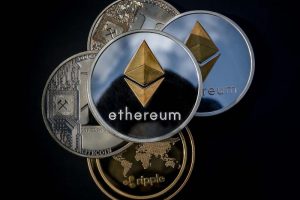What is the difference between Coins and Tokens
Coins are any cryptocurrency that has a standalone independent blockchain (Bitcoin, Ethereum, XRP, …)
– Altcoins are considered as coins that are not Bitcoin.
– Tokens are cryptocurrencies that do not have their own blockchain but live on another blockchain.
Entering the cryptocurrency market can be a complicated and daunting task. You may have heard of Bitcoin, but what about the other thousands of coins and blockchain projects out there?
To obtain a better grasp of the crypto markets, it’s easiest to classify cryptocurrencies into two distinct categories: coins and tokens.
Coins
Coins refer to any cryptocurrency that has a standalone, independent blockchain — like Bitcoin.
These cryptocurrencies are bootstrapped from scratch, and the broader network is designed explicitly to achieve a certain goal. For example, Bitcoin exists as a censorship-resistant store of value and medium of exchange that has a secure, fixed monetary policy. The native token of Bitcoin, BTC (i.e., bitcoins), is the most liquid cryptocurrency in the market and has both the highest market cap and realized market cap in the cryptocurrency sector.
Coin projects typically draw inspiration from past technologies or other cryptocurrencies and fuse them into an innovative network catering to a specific purpose.
Another example of a coin, Ethereum’s Ether (ETH) is the native coin of a smart contracts platform for creating general-purpose computer programs that run on a decentralized blockchain. Rather than focusing on financial data, Ethereum focuses on arbitrary program data that can cover anything from games to social media. Ether is used for sending/receiving, managing assets, paying gas fees, and interacting with decentralized applications (dapps) on the network.

Tokens
Tokens are a unique outlay of broader smart contracts platforms like Ethereum that enable users to create, issue, and manage tokens that are derivatives of the primary blockchain.
For example, the ICO craze of 2017 was fueled by Ethereum’s ERC-20 token standard, which is basically a protocol for creating tokens (besides ETH) on the Ethereum blockchain that can be exchanged with each other. Projects would announce or build an application on Ethereum using smart contracts, and issue a native token for use in that application, raising funds directly from investors in ETH in the process.
Tokens occupy a unique corner of the cryptocurrency market where they function as “utility” tokens within an application’s ecosystem for incentivizing certain behavior or paying fees. For example, the popular ERC-20 token Dai is part of the MakerDAO dapp on Ethereum. MakerDAO is a way for users to access credit instruments like lending/borrowing using Dai, which is designed to be stable. ERC-20 tokens like Dai can be exchanged for any other ERC-20 token or other Ethereum-based standards (i.e., ERC-721), including the ETH coin.
As a result, tokens exist as application-specific tokens within a coin’s broader cryptocurrency/blockchain network, like Dai existing within Ethereum’s ecosystem.
Other tokens besides Dai include Maker (MKR), 0x, Augur (REP), Komodo (KMD), and Golem (GNT).

Coins need to be exchanged with each other through cryptocurrency exchanges because they are built on different, non-standardized code protocols. Conversely, tokens on Ethereum (e.g., ERC-20) can be exchanged through internal applications amongst each other with minimal friction because they are built on standardized code protocols.

Approaching cryptocurrency markets is a challenging task, but understanding the basic distinction between the various types of cryptocurrencies can help you manage risk and make better decisions in a volatile ecosystem.
What is the difference between Coins and Tokens
See how I stake WESA tokens here >> with good monthly results

Click HERE to start on the path to financial independence>

